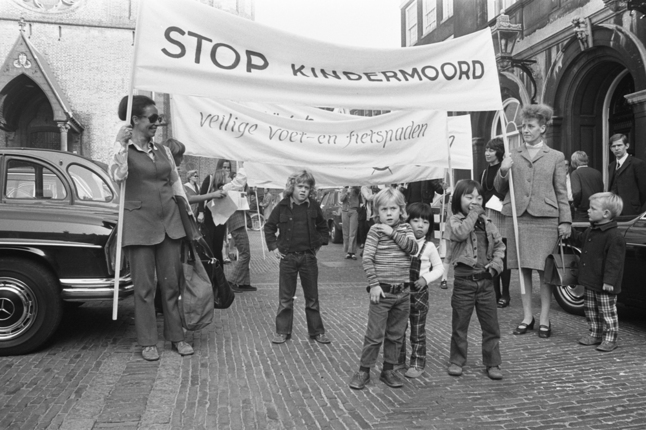UK cycling
Test your awareness
Video Posted on
An old psychology test seems to have been re-appropriated by TfL to show people how easy it is to overlook something that should be obvious.
A good test if you’ve not seen it before, though the link to cycling and driver awareness is questionable/tenuous at best
100 miles of Dutch-Style Bike Lanes planned for Bristol
Link Posted on Updated on
100 Miles of Dutch-Style Bike Lanes for Bristol
In a bid to save lives and reduce the fear factor preventing people from taking to two wheels, Bristol is to announce radical new proposals which will make it Britain’s first city to adopt a truly Dutch-style network of cycle lanes.
Already the UK’s top cycling city with an estimated 16,000 regular cyclists, the 100 miles of cycle paths are due to be operational as soon as Spring 2014!
In contrast to this fantastic news, the national picture is comparatively bleak. With cycle uptake ever on the increase, the number of cyclists killed or injured on Britain’s roads is at its highest for three years: 118 deaths and 3,222 injuries recorded in 2012. Although these figures represent regrettable injuries and tragic loss of life, statistics like these are what motivated the Dutch to unite as a nation and demand the changes that led to their precedent-setting infrastructure.


In other (related) news, a new peer-reviewed study has revealed that financial investment in cycling infrastructure can increase the share of journeys taken by bike. This might seem like the predictable answer to another do-bears-poop-in-the-woods sort of question, but it’s not always cut-and-dried that spending to achieve a goal actually works. Look at roadbuilding, for instance: billions of pounds are pumped into constructing new roads in order to reduce congestion, yet congestion keeps on increasing.
Ridiculous, unnecessary, and obvious as it seems, it’s still good press. Click here for the Guardian article.

Related articles
- Dutch-style bike lanes set for roll-out in Bristol – Britain’s cycling capital (independent.co.uk)
- City’s ‘Dutch-style’ bike lane plans (bbc.co.uk)
- Move over Amsterdam, the London cycling revolution is in top gear (standard.co.uk)
- New Denver Bike Lanes Not Only Safer, Good For Business (denver.cbslocal.com)
A post about roundabouts (of all things)
Video Posted on Updated on
The Dutch have done it again; as usual paving the way with an innovation that is as beautifully engineered as it is practical. Constructed between Eindhoven and Veldhoven, the new ‘hovering’ roundabout separates bicycles from the motor vehicles below, harmonising high-functionality, aesthetic appeal, and plain old-fashioned genius.
My initial reaction of awe quickly turned to irritation as I realised that I don’t live in The Netherlands any more. This morning’s emotional roller-coaster took yet another turn as jealously turned to joy when I caught wind of plans for more conventional Dutch-style roundabouts to be trialled in the UK: http://www.bbc.co.uk/news/uk-england-london-22347184
For those of you who are unfamiliar with how Dutch roundabouts work, check out this brilliant video from our friends at NL Cycling: http://www.youtube.com/watch?v=XhqTc_wx5EU
Dutch roundabouts are intuitive to use once you understand how the shark-teeth markings on the road indicate priority, and there’s really nothing to it. Roundabouts can be pretty dangerous and intimidating places for cyclists in the UK, but in The Netherlands they are a breeze. Transport For London (TFL) has raised concerns that the Dutch design might reduce the speed of motorised traffic. Personally, however, I don’t see that as a cause for concern, but rather yet another benefit of a concept that prioritises the most vulnerable road users.
If the UK is realistic about meeting emissions targets, combating sedentary lifestyles, and generally improving the nation’s health then a great way to do this is to incentivise cycling by introducing measures to protect and prioritise people on bikes. It frustrates me when such a simple and elegant solution to so many of our country’s problems exists within tantalising reach but remains obstructed by a system that perpetuates antiquarian notions of cars as symbols of progress and success.
Russell Brand was wrong to tell the youth not to vote; we need to vote, and we need to vote for some serious change if we want to see it happen in our lifetime. It’s hard to believe, but until the mid-seventies the Dutch had a car-centric culture and a government who gave little or no consideration to bicycle infrastructure. The people got angry, voted for a left-wing government, and good things started to happen; laws changed, cycle paths were build, and road deaths decreased dramatically. I really don’t understand why we can’t do the same.
